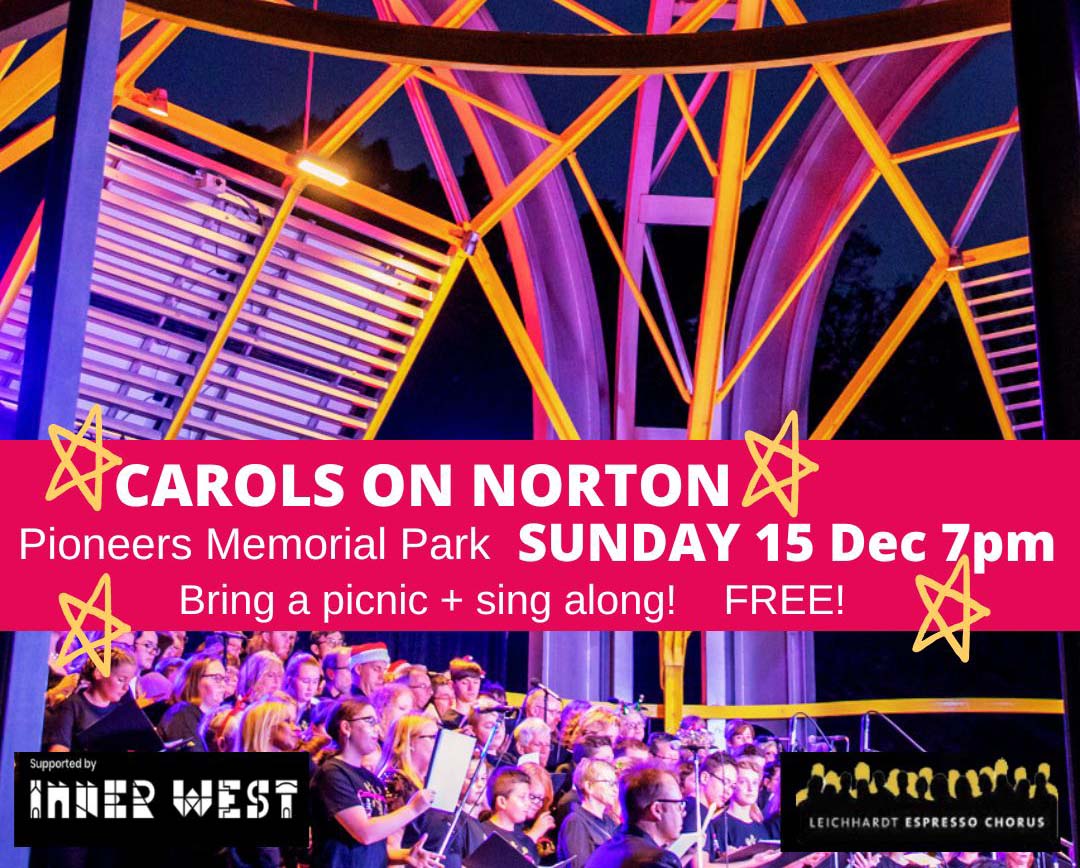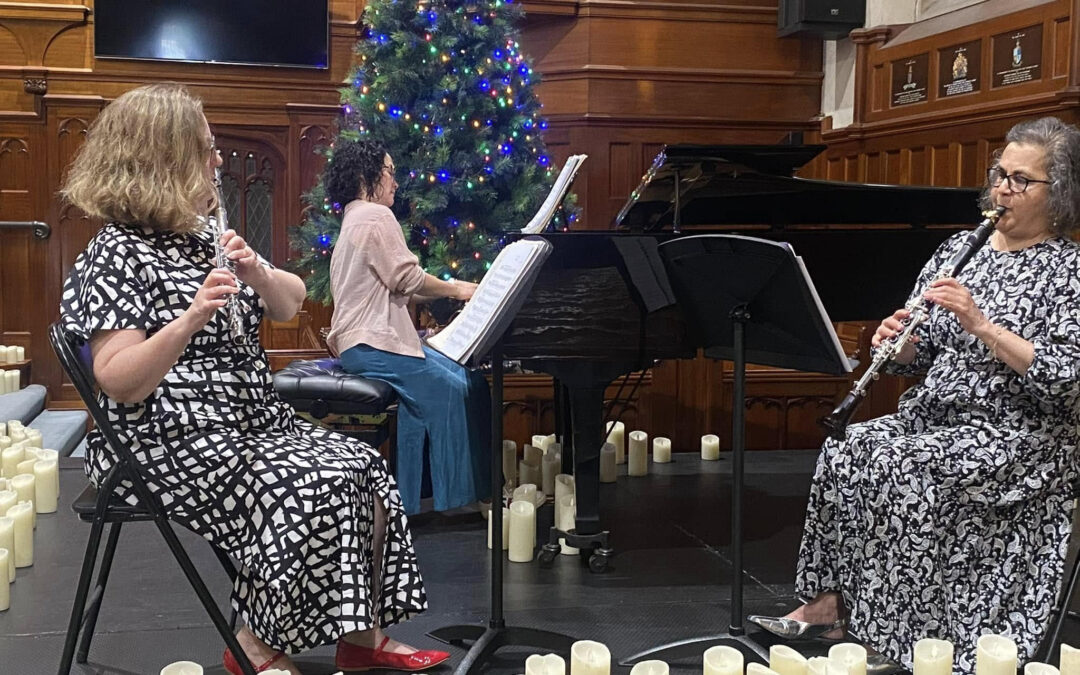They don’t make fun like this any more.
As Scottish organist and pianist David Gray stepped on to the stage in the Kelvin Grove State College Auditorium, presented by TOSAQ and the Queensland Music Festival, he won the audience’s heart by saying Brisbane is his favourite place to play in Australia. (Note: get ready to book your tickets next time he’s in town.)
He was here to play the 1934 Christie theatre organ, restored and maintained by volunteers from TOSAQ – the Theatre Organ Society of Australia’s Queensland division.
Gray is 27 years old. Well, sort of. His birthday falls on the thirteenth of July. But since he was mid-air on his way from Los Angeles to Australia, he crossed the dateline and “missed” his birthday so, technically, he’s still 26. Yet his performances and on-stage repartee convey charisma and intelligence well beyond his years.
The auditorium was filled with table seating and lit by candles, which gave the room a cosy atmosphere.
If you’re looking for a grand entrance, the Christie delivers. As Gray began playing, the Christie rose dramatically from beneath the stage. Gray says Brisbane’s is “the best currently functioning Christie in the world – literally faultless.” Interstate rivalry is alive and well: the Theatre Organ Society of NSW is currently restoring their Christie. Watch this space.
It’s always refreshing when an artist engages an audience, and Gray introduced each piece with endearing familiarity, charm and plenty of humour.
Opening the concert, Gray played a Sidney Torch composition, a jovial piece that took the audience on a sight seeing ride – with the opening bars sounding a lot like The Trolley Song – “ring ring ring goes the trolley…” The cinematic sound was enhanced by the organ’s percussion effects and deftly handled crescendo pedalling; the three pedals on the Christie are labelled ‘Swell1’, ‘Swell 2’ and ‘Cresc’. Buttons alongside the pedals activate various other filigree sounds: a cymbal roll, boat whistle, fire bell, bird whistle, siren and snare drum roll. The piece ended with a quaint little bell ring. (There goes the trolley.)
Although the console of the Christie is computer controlled, the sound is entirely analogue and physical. Room-sized wooden speaker grills on either side of the stage don’t house speakers – they’re portals to rooms crammed with a network of organ pipes – one for each sound the Christie makes. When you hear a tambourine, glockenspiel or piano, that’s what’s being played, not a simulacrum. There’s even a white upright piano at the far right of the stage that’s a living part of the Christie ‘organism’, activated to ghost-play through commands delivered from the Christie console.
The Christie breathes as if it’s alive – you can hear the sound of air as it inhales and exhales. No wonder Gray gave the instrument an affectionate pat each time he left the stage. It was a fitting reminder of the team keeping the Christie alive: TOSAQ and its dedicated volunteers, working long hours to ensure that this historic instrument will continue to entertain for generations to come. The volunteers also put on a very impressive afternoon tea at interval.
Sidney Torch’s I Hate Myself showed the composer’s trademark rhythmic style, and highlighted the Christie’s bell-clear French trumpet – a sound unique to this instrument. The ominous, self-deprecating piece of musical satire opened in a foreboding Adams-family minor key, with a clarinet-like section adding a haunting, lilting shadow.
The 1926 Johnny Green jazz standard Body and Soul demonstrated the Christie’s vibrato to great effect. One of the great joys of hearing an organ at full belt is the physical, core-shaking sensation of pressurised air thrumming from the lower register. It’s like the physical embodiment of the universal Wi-Fi symbol – an increasing wave of sound that hits the audience right in the heart. We felt it, body and soul.
Through the entire recital (which ran to more than three hours) Gray played entirely from memory. This left the art deco stencilled wooden ‘Christie’ lettering on the music stand visible, and reinforced the brilliance of Gray’s skill in recalling such complex compositions by heart – knowing when to tap the keys on any one of the three tiers of manuals (keyboards), when to press the associated buttons and pistons or flick the stop tabs to change the sounds, all while pedalling like a duckling.
Video screens either side of the stage projected the Christie’s console and pedals, giving the audience a view of the artist at work.
David stepped down from the Christie to play the piano – a Yamaha C5 grand (supplied by Boyds – The Piano Shop in Wooloowin). No filigree here. And what better piece to showcase his skill than Frederic Chopin’s Ballade No. 3 in A flat major. Gray’s faultless playing conveyed expressive drama and emotion, transcending centuries to whisk the audience into a classical-romantic European dream. But not for too long.
Gray bounded back up the stairs to the Christie, launching into Hoe Down from Aaron Copland’s ballet, Romeo. The galloping sounds conjured up Midwest America, punctuated by a staggeringly realistic bellowing ‘moo’ from Gray at the end.
An organ arrangement of Debussy’s Girl with the Flaxen Hair let the Christie sing in hymn-like quality.
The next piano solo brought an unexpected twist: Russian jazz written at the height of the Cold War in the 1980s. The final, tempestuous movement of Nikolai Kapustin’s Piano Sonata No 1 showed Gray’s technical brilliance, conveying the Gershwin-like jazz/boogie-woogie nature of the music with mesmerising speed, accuracy and finesse.
Then it was back to the beloved Christie, for a medley of Leonard Bernstein’s West Side Story, with Gray commenting that the Christie is a “really nice organ for playing this kind of music on.” Belting out show tunes certainly shows its true colours.
Gray humorously dedicated Mack Gordon’s Wake Up and Live to one of his friends, a funeral director.
Jule Stein’s 1964 People, made famous by Barbra Streisand’s performance in the film Funny Girl, expressed the familiar avant-garde melody through the Christie’s colourful prism.
In Dancing Tambourine by George Wright, Gray used the Christie’s electronic capture action system – playing back his own earlier recorded performance as he accompanied – with Wright’s scales-in-chords composition showing why he was regarded as a master in rhythm.
A Gershwin medley put the Christie through its paces with the familiar sounds of songs such as Shall We Dance, They All Laughed, and Can’t Take That Away From Me, among others. A standout was the potato/potahto, tomato/tomahto section in Let’s Call The Whole Thing Off expressed through the Christie’s different voices, each answering the other.
Maurice Ravel’s Ondine from Gaspard de la Nuit brought another display of Gray’s proficiency as a classical pianist. This technically challenging piece represents the siren call of a mermaid in ethereal waves of sounds flowing up and down the keyboard giving the impression of surging, flowing water. Under Gray’s command, the piano called its song of longing in dreamlike aquatic sounds with trills and glissandi.
As an organist, Gray is often asked if he plays church organs. Well, he did, once. But many years ago he was caught by a stern clergyman at St Mary’s in Edinburgh practising the distinctively secular The Horse Guards – Whitehall by Haydn Wood, and was subsequently banished from St Mary’s church organ for playing “pop music”. (Praise be – our gain!)
Back to the piano, for a notoriously difficult piece by Charles-Valentin Alkan, Concerto For Solo Piano. Seemingly written for a pianist with four arms and a giant’s hand span, Gray took the piece in his virtuosic stride. The frenetic showstopper included echoes of Chopin-like lyricism, leaving Gray sweating and the audience breathless.
For a fitting finale on the Christie, Gray delivered an organ transcription of Ravel’s La Valse. Filled with twists and turns, this piece packs a punch. (Gray even crossed himself before playing, eliciting laughs from the audience.)
For an encore, Gray dazzled yet again on the piano with a superb arrangement of Bizet’s Carmen Fantasie, possibly the Horowitz arrangement. (Thanks to Daniel Mitterdorfer of Crescendo Music Publications for identifying this piece.)
David Gray’s performance was an extraordinary feat of endurance, memory and dexterity – and utterly exhilarating. After witnessing such skill, tapping at a computer keyboard and space bar makes me feel like a pre-schooler trying to solve a round-hole/square-block puzzle.
The world needs more humans like the amenable, intelligent David Gray. And the world needs more instruments like the Christie.
They really don’t make fun like this any more.




























